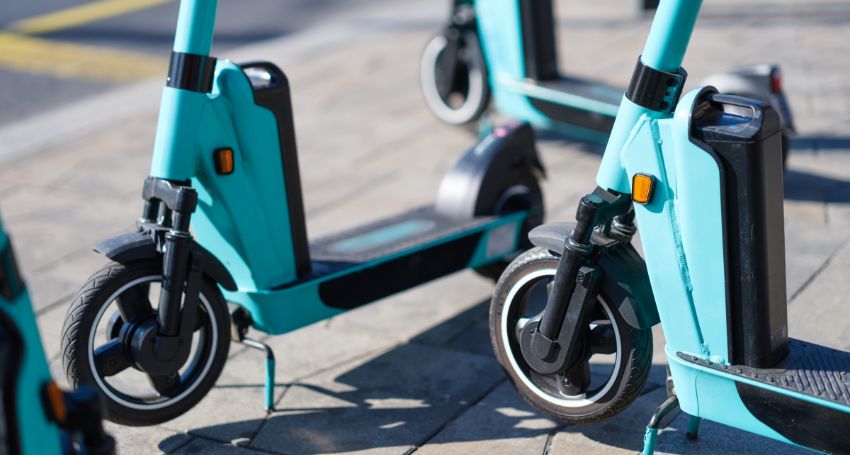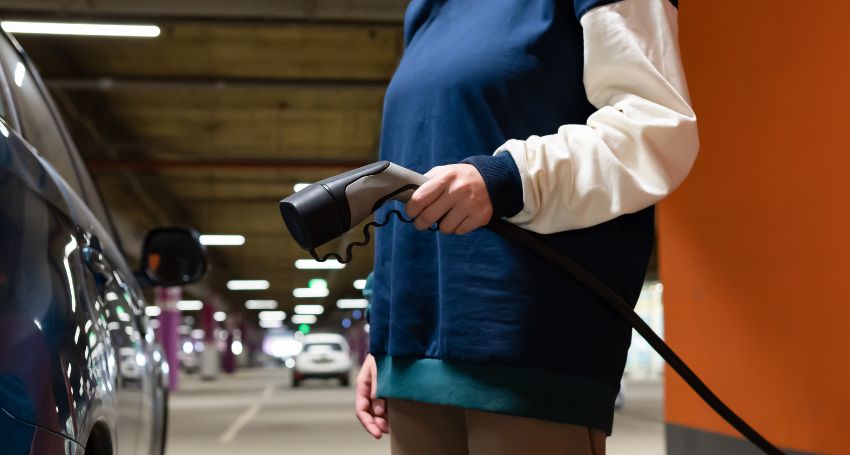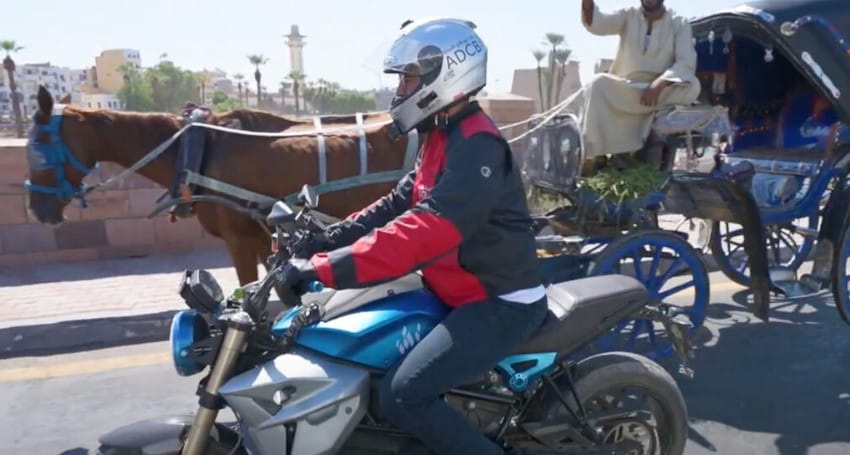
The Dawn of Electric Motorcycles in Egypt
The transportation industry in Egypt is witnessing a significant transformation with the introduction of electric vehicles, particularly electric motorcycles. This shift is primarily driven by the government’s commitment to sustainable transport, technological advancements, and an increased understanding of the environmental advantages of electric bikes. While the adoption of electric motorcycles is still in its early stages, the potential for expansion is significant. Electric motorcycles, often referred to as battery-powered motorcycles, present a compelling alternative to traditional gas-powered motorcycles. They are not only efficient but also require less motorcycle maintenance, and notably, produce zero emissions. The cost of electricity in Egypt is substantially lower than that of gasoline, which positions electric motorcycles as an economically appealing option for a large number of consumers. The Egyptian government has been instrumental in promoting the adoption of electric motorcycles. Policies have been put in place, and electric vehicle subsidies have been offered to incentivize consumers to make the switch. Tax breaks for motorcycle dealers dealing in electric vehicles and the development of EV charging stations across the country further bolster this initiative.

What is driving the shift towards electric motorcycles in Egypt?
The transition towards electric motorcycles in Egypt is fueled by several factors. Primarily, the government’s recognition of electric vehicles’ potential to reduce greenhouse gas emissions and enhance air quality has led to the implementation of policies and incentives promoting electric bikes. Technological advancement is another significant driver. Electric motorcycles have become more efficient and reliable, boasting longer battery life and faster charging times. These improvements have rendered electric motorcycles a practical and attractive option for many consumers. Lastly, there is a growing environmental consciousness among Egyptians. This awareness has triggered an increased demand for electric motorcycles, especially among the younger, more environmentally conscious consumers.
What are the environmental benefits of electric motorcycles?
Electric motorcycles offer a plethora of environmental benefits. The most significant benefit is the reduction in greenhouse gas emissions, as electric motorcycles produce zero emissions, making them a cleaner and more sustainable mode of transport. Electric motorcycles also contribute to improved air quality, a critical concern in urban areas like Cairo, where air pollution is a significant issue. By opting for electric motorcycles, individuals can contribute to improving air quality, thereby reducing the health risks associated with air pollution. Additionally, electric motorcycles help reduce noise pollution as they are considerably quieter than their gas-powered counterparts. This contributes to a more peaceful urban environment. In conclusion, the adoption of electric motorcycles in Egypt presents a promising solution to some of the country’s environmental challenges, promoting road safety and sustainable transport.
How are electric motorcycles impacting the Egyptian transportation sector?
Electric motorcycles, a subset of electric vehicles, are redefining the Egyptian transportation sector. These battery-powered motorcycles are contributing to a more sustainable transport system in Egypt. Their zero emissions operation is a significant step towards reducing air pollution and combating climate change. Electric motorcycles are also transforming energy consumption patterns. Unlike traditional motorcycles that rely on fossil fuels, electric bikes use electricity, significantly reducing the sector’s dependence on non-renewable resources. The rise of electric motorcycles is also creating economic opportunities. Motorcycle dealers are diversifying their offerings to include electric bikes, contributing to new job creation and economic growth. The need for EV charging stations is also stimulating investment and innovation in infrastructure development. Furthermore, electric motorcycles are influencing consumer behavior. As more Egyptians become aware of the benefits of electric bikes, including lower motorcycle maintenance costs and reduced emissions, the demand for these vehicles is expected to grow.
What are the challenges facing the electric motorcycle industry in Egypt?
Despite their potential, electric motorcycles face several challenges in Egypt. The most pressing issue is the lack of extensive EV charging stations. The country needs a robust network of charging stations to support the operation of electric motorcycles. The absence of such infrastructure can deter potential electric bike users, hindering the industry’s growth. Another significant challenge is the high initial costs of electric motorcycles. While these vehicles offer savings over time due to lower motorcycle maintenance costs, their purchase price is often higher than that of traditional motorcycles. This cost barrier can be a deterrent for many potential buyers. Additionally, the lack of comprehensive electric vehicle subsidies and incentives can further discourage potential users. Consumer awareness and acceptance of electric motorcycles also remain limited. Despite the growing global trend towards electric mobility, many Egyptians are still unfamiliar with the concept of electric bikes. Misconceptions about their performance, range, and road safety can discourage potential users. Therefore, efforts to educate the public and promote the benefits of electric motorcycles are critical for overcoming this challenge.
Ali Abdo’s Journey to COP27 on His EVA EsseEsse9 from Energica
Ali Abdo, an environmental activist from Egypt, embarked on a notable journey to the 27th UN Climate Change Conference of the Parties (COP27) on his EVA EsseEsse9 from Energica. His journey was a testament to the potential of sustainable transport solutions like electric motorcycles and a call to action for climate change.
Who is Ali Abdo and what was the purpose of his journey?
Ali Abdo is a well-known figure in the field of environmental activism in Egypt. His commitment to promoting sustainable practices is evident in his various initiatives, one of which was his journey to COP27 on an electric motorcycle. This journey was not only a demonstration of the viability of electric bikes but also a symbolic gesture to raise awareness about climate change and the need for sustainable transport solutions. By choosing to travel on a battery-powered motorcycle, Ali aimed to demonstrate the practicality and efficiency of electric vehicles. His journey served as a testament to the advancements in electric vehicle technology, showcasing their potential to replace traditional gasoline vehicles. Moreover, Ali’s journey was a call to action to raise awareness about the climate crisis and the role of sustainable transport, like electric motorcycles, in mitigating it. His journey to COP27 was a powerful reminder of the need for individual and collective action in the global fight against climate change.
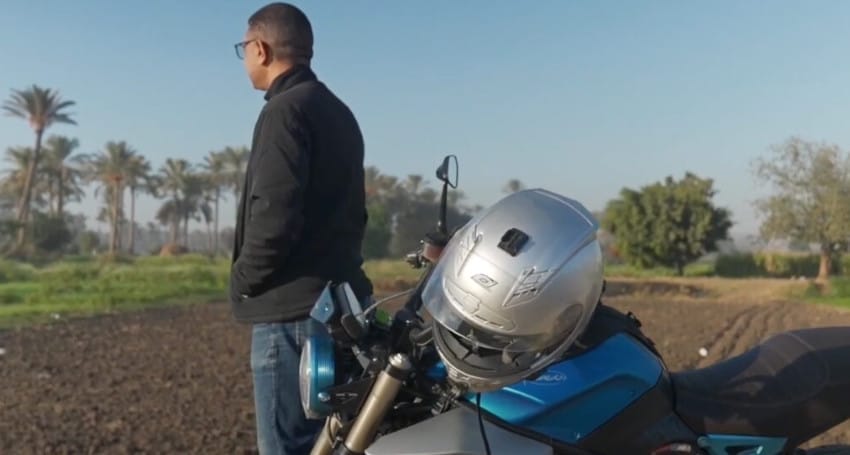
How did Ali Abdo’s ride to COP27 promote electric motorcycles?
Ali Abdo’s ride to COP27 was a significant milestone in the promotion of electric vehicles, particularly electric motorcycles. His journey from Cairo to Glasgow, a distance surpassing 3000 miles, was completed on a battery-powered motorcycle, demonstrating the potential of this sustainable transport. This feat served to challenge the misconceptions held by many motorcycle dealers who may have doubted the performance and reliability of electric bikes. His journey also served to highlight the environmental benefits of electric vehicles, specifically electric motorcycles. By opting for a battery-powered motorcycle, Abdo significantly reduced his carbon footprint, thus promoting the concept of zero emissions. This act was a potent symbol of the role electric bikes can play in combating climate change and promoting sustainable transport. Furthermore, Abdo’s ride gained significant media attention, serving to raise public awareness about electric vehicles. This coverage, both in Egypt and internationally, provided a platform to discuss the advantages of electric bikes and the potential impact of electric vehicle subsidies. This increased visibility is likely to influence the perception and adoption of electric motorcycles among consumers and motorcycle dealers alike.
What difficulties did Ali Abdo encounter during his ride?
Despite the successful completion of his journey, Ali Abdo faced several challenges during his ride to COP27. One of the main difficulties was the limited availability of EV charging stations along his route. This necessitated careful planning and often resulted in longer journey times as he had to detour to find suitable charging points. In some areas, particularly in rural and remote regions, the lack of EV charging stations posed a significant challenge. Another issue was the range of the battery-powered motorcycle. Although electric bikes have seen considerable improvements in range in recent years, they still lag behind their gasoline-powered counterparts. This meant that Abdo had to carefully manage his battery usage, particularly in areas where EV charging stations were scarce. Weather conditions also posed a challenge. Riding in adverse weather conditions can significantly reduce the range of an electric motorcycle, adding an extra layer of complexity to the journey. Despite these difficulties, Abdo successfully completed his journey, demonstrating the resilience and potential of electric bikes, even in the face of motorcycle maintenance issues.
What was the impact of Ali Abdo’s journey on the perception of electric motorcycles in Egypt?
Ali Abdo’s journey had a profound impact on the perception of electric motorcycles in Egypt. His ride served as a powerful demonstration of the potential of electric bikes, challenging common misconceptions about their performance and range. This has helped to shift public opinion, with more people now seeing electric motorcycles as a viable and sustainable mode of transport. Furthermore, the media coverage of Abdo’s journey has raised awareness about the environmental benefits of electric motorcycles. This is particularly significant in Egypt, a country that is heavily reliant on fossil fuels and where air pollution is a major issue. By showcasing the potential of electric motorcycles to reduce emissions, Abdo’s journey has contributed to a growing interest in electric vehicles in Egypt. Finally, Abdo’s journey has also highlighted the need for improved EV charging stations in Egypt. The challenges he faced in finding suitable charging points have underscored the importance of developing a robust charging network to support the adoption of electric motorcycles. This is likely to stimulate discussions and initiatives aimed at improving the charging infrastructure in Egypt, thereby facilitating the transition to electric vehicles.
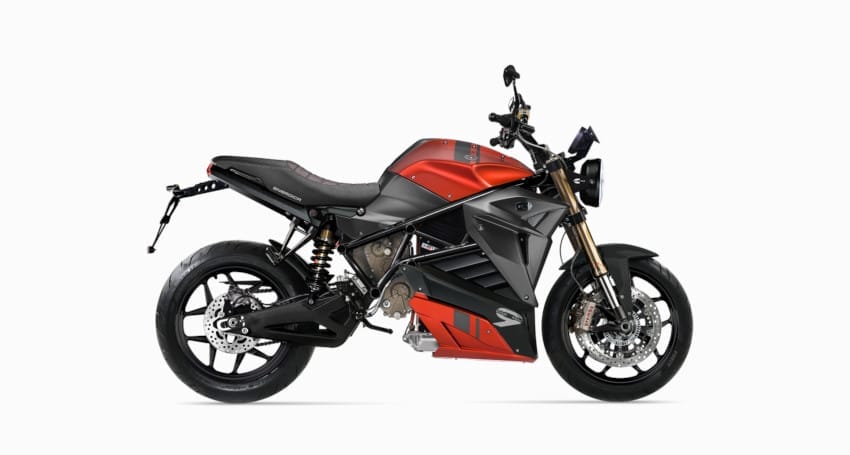
Energica’s EVA EsseEsse9: A Pioneer in Egypt’s Electric Motorcycle Scene
The EVA EsseEsse9 by Energica is a revolutionary model in the realm of electric vehicles, marking its territory in Egypt’s electric motorcycle market. This battery-powered motorcycle is a testament to the potential of sustainable transport in a country that is progressively embracing eco-friendly and efficient transport solutions. Egypt’s motorcycle dealers, traditionally marketing petrol-powered models, are witnessing a significant shift towards electric bikes like the EVA EsseEsse9. The EVA EsseEsse9 signifies more than just an electric motorcycle; it represents a new era in Egypt’s transportation sector. The arrival of such advanced electric bikes in Egypt is a positive stride towards reducing carbon emissions and promoting sustainable living. The EVA EsseEsse9’s introduction into Egypt’s motorcycle market is a significant milestone in the country’s journey towards green mobility, symbolizing the readiness of the market to embrace this new technology. The success of the EVA EsseEsse9 in Egypt underscores the potential of electric motorcycles to reshape the country’s transportation landscape. It reflects the growing acceptance of electric vehicles among Egyptian consumers, paving the way for a future dominated by zero emissions and sustainable transport.
Why is the EVA EsseEsse9 gaining popularity in Egypt?
The EVA EsseEsse9’s growing popularity in Egypt can be attributed to its unique blend of performance and efficiency. This electric vehicle is capable of reaching a top speed of 200 km/h and offers a range of 150 km, providing an exhilarating riding experience that aligns with the principles of sustainable transport. The EVA EsseEsse9’s technological advancements also contribute to its rising popularity. It is equipped with a fast-charging system, allowing the motorcycle to be fully charged in just 3.5 hours. This, coupled with its impressive range, makes the EVA EsseEsse9 a practical and convenient alternative to traditional motorcycles. Motorcycle dealers in Egypt are recognizing the potential of such electric bikes, leading to a shift in consumer preferences towards electric vehicles. The EVA EsseEsse9’s sleek design and superior build quality also appeal to a wide range of riders, from enthusiasts to everyday commuters. The growing popularity of this battery-powered motorcycle in Egypt is a testament to the evolving consumer preferences and the growing acceptance of electric vehicles.

What distinct features does the EVA EsseEsse9 offer?
The EVA EsseEsse9 distinguishes itself with features that set it apart from other electric bikes. One of its key features is its state-of-the-art electric motor, which delivers a maximum power of 80 kW and a maximum torque of 200 Nm. This powerful motor ensures a thrilling riding experience while maintaining high energy efficiency. Another standout feature is its sophisticated battery management system (BMS). The BMS continuously monitors and balances the cells to ensure optimal performance and prolong the battery’s life. It also protects the battery from overcharging and overheating, enhancing the motorcycle’s reliability and contributing to road safety. The EVA EsseEsse9 also boasts advanced connectivity features, including a 4.3-inch TFT color display with an integrated GPS receiver, Bluetooth connectivity, and a dedicated smartphone app. These features allow riders to monitor and control various aspects of the motorcycle, from navigation and performance data to battery status and charging settings. These distinctive features underscore the EVA EsseEsse9’s position as a cutting-edge electric motorcycle that offers a unique blend of performance, efficiency, and connectivity.
How does the EVA EsseEsse9 compare to other electric motorcycles?
The EVA EsseEsse9, a product of Energica, is a notable player in the electric vehicles market, particularly among battery-powered motorcycles. This model differentiates itself from other electric bikes through its unique blend of vintage aesthetics and advanced technology. The design takes cues from classic Italian motorcycles, while the technology is decidedly future-forward. The EVA EsseEsse9’s electric motor delivers a peak power of 80 kW, equivalent to about 109 horsepower, and a maximum torque of 180 Nm. This power output places it among the top tier of electric motorcycles, surpassing many motorcycle dealers’ offerings. The EVA EsseEsse9 excels not only in power but also in range, a crucial aspect for electric bikes. Capable of covering up to 125 miles on a single charge, it surpasses many competitors, making it a standout choice for those prioritizing distance and convenience in their battery-powered motorcycle. Its fast charging system, which can reach 80% charge in just 30 minutes, further enhances its appeal. The EVA EsseEsse9 also boasts superior ride quality and handling, thanks to its fully adjustable suspension system. This allows riders to tailor their ride to suit personal preferences or specific road conditions, enhancing road safety. Additionally, it includes an advanced suite of rider assistance systems, such as ABS, traction control, and a regenerative braking system, providing a safer and more comfortable riding experience.
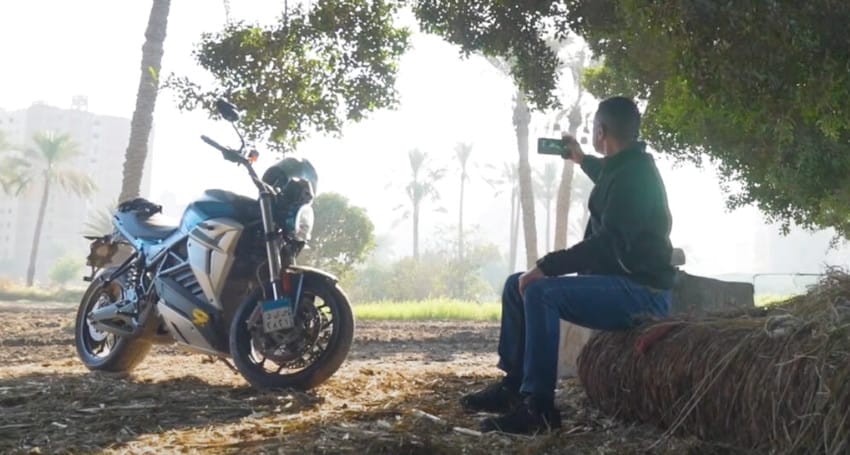
The Future Trajectory of Electric Motorcycles in Egypt
Electric motorcycles are set to play a significant role in Egypt’s sustainable transport future. With a high population density and a burgeoning middle class, the demand for efficient, economical, and zero emissions transportation is growing. Battery-powered motorcycles, with their low operating costs and zero emissions, are ideally positioned to meet this demand. The Egyptian government has recognized the potential of electric vehicles and is implementing measures to foster their adoption. These include providing electric vehicle subsidies for manufacturers and initiatives to develop EV charging stations throughout the country. These efforts are expected to stimulate the growth of the electric motorcycle market in Egypt, attracting more motorcycle dealers to invest in electric bikes. However, there are challenges to be addressed for electric motorcycles to achieve mainstream acceptance in Egypt. The high initial cost of electric motorcycles, compared to conventional ones, is a significant obstacle. Additionally, there is a lack of public awareness about the advantages of electric vehicles. To overcome these challenges, concerted efforts from both the government and the private sector are required.
What does the future hold for electric motorcycles in Egypt?
The future of electric motorcycles in Egypt appears bright. With the government’s supportive stance and the increasing awareness of the benefits of electric vehicles, the adoption of electric motorcycles is set to grow. This growth is likely to be accompanied by an increase in the number of electric motorcycle dealers in the country, creating a vibrant ecosystem for electric vehicles. The rise in the adoption of electric motorcycles will also have significant implications for Egypt’s energy sector. As more people switch to battery-powered motorcycles, the demand for electricity is expected to rise. This increased demand will necessitate investments in renewable energy sources and improvements to the grid infrastructure to ensure a reliable supply of electricity for EV charging stations. In conclusion, while there are challenges to the widespread adoption of electric motorcycles in Egypt, the prospects for the future are positive. With the right combination of government policies, public education, and industry initiatives, Egypt could become a leader in the electric motorcycle market. The adoption of electric motorcycles not only represents a shift in transportation modes but also has the potential to drive significant changes in the energy sector.
What role can the government play to boost the electric motorcycle sector?
The government can significantly influence the electric motorcycle sector, particularly in promoting electric vehicles, including electric bikes and battery-powered motorcycles. By implementing favorable policies, such as electric vehicle subsidies, the government can stimulate growth among motorcycle dealers specializing in electric models. These subsidies can reduce production costs, making battery-powered motorcycles more affordable and increasing their demand. Investment in EV charging stations is another critical area where the government can spur the growth of the electric motorcycle sector. An extensive network of EV charging stations can alleviate range anxiety among potential electric bike buyers, thereby boosting the sector. Moreover, stringent emission standards emphasizing zero emissions can encourage traditional motorcycle dealers to transition to electric models. Public awareness campaigns can play a significant role in promoting the adoption of electric bikes and battery-powered motorcycles. The government can educate the public about the benefits of sustainable transport, including zero emissions and lower motorcycle maintenance costs associated with electric vehicles. Furthermore, partnerships with educational institutions can foster innovation and technical expertise in the electric motorcycle sector.
What are the expected technological advancements in the electric motorcycle industry?
The electric motorcycle industry is on the cusp of significant technological advancements, particularly in the context of electric vehicles. One key area of innovation is the development of high-performance batteries for electric bikes and battery-powered motorcycles. These batteries are expected to offer faster charging times and longer lifespan, enhancing the appeal of electric bikes among motorcycle dealers and consumers. The integration of advanced driver-assistance systems (ADAS) in battery-powered motorcycles is another expected advancement. These systems can enhance road safety by providing features such as adaptive cruise control, collision avoidance, and lane-keeping assist. This not only makes electric bikes safer but also reduces motorcycle maintenance costs. Artificial intelligence (AI) and machine learning are set to revolutionize the electric motorcycle industry. These technologies can optimize the performance, efficiency, and safety of electric bikes by analyzing riding patterns and adjusting settings accordingly. Additionally, advancements in fast-charging technology for EV charging stations are expected to reduce the charging time of battery-powered motorcycles, further boosting their appeal.


